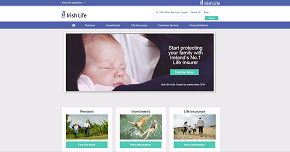Pensions are a very tax-efficient way of saving
When you contribute to a company pension scheme, the net cost or the 'real' cost to you isn't as high as you would initially think. The Government provides generous tax relief at your highest tax rate to encourage pension saving.
In other words if your income levels bring you into the higher income tax bracket then you get tax relief at that rate. Likewise, if your income level means that you are paying tax at the lower rate only, then this is the rate at which you get the tax relief.
How pension tax relief works
You decide how much you need to contribute to your pension to provide you with a comfortable retirement. Then your payroll area will arrange all the rest and give you the tax relief deductions at source.
So, if you decide, for example, to save €100 a month into your pension plan, your payroll department will arrange for that amount to be paid into your pension plan directly from your salary. They will also calculate and apply the tax relief that you are entitled to. Your take-home pay will only reduce by the difference.
This means that should you contribute €300 a month, your take-home pay will only go down by €180 if you pay tax at 40% and by €240 if you pay tax at 20%. But €300 will be invested into your pension plan.
| If you pay tax at 40%* | If you pay tax at 20% | |
|---|---|---|
| €100 | Total Investment to your pension | €100 |
| - €40 | Less tax saved | - €20 |
| €60 | Net Cost to you | €80 |
*Marginal tax rate as of April 2017.
The table below displays the percentage of your income that you can receive tax relief for when contributing to a pension plan. This includes any compulsory contributions to your main scheme and Additional Voluntary Contributions. Any contribution in excess of compulsory employee contribution paid by an employee will be treated as Additional Voluntary Contributions.
| Age | Maximum % of taxable earnings allowable for tax relief on your pension contributions |
|---|---|
| Under 30 | 15% |
| 30-39 | 20% |
| 40-49 | 25% |
| 50-54 | 30% |
| 55-59 | 35% |
| 60 and over | 40% |
If you are a member of an occupational pension scheme, the maximum contribution levels for tax relief relate to the total employee contributions to any occupational pension schemes.
For Group PRSAs, these levels include the employer as well as any employee contributions.
There are also limits on the benefits that may be provided at retirement.
There are also limits on the benefits that may be provided. Under current legislation, the Standard Fund Threshold allowable for tax relief purposes is €2.0 million. This maximum amount includes any pension benefits already taken together with pension benefits yet to be taken. Any fund in excess of this amount will be liable to a once-off income tax charge at the top rate of tax (currently 40%) when it is drawn down on retirement. This limit may be adjusted annually in line with an earnings index.
Please note that the Revenue Commissioners have also placed limits on the total amount that can be contributed by you and your employer to your occupational pension plan.
However, if you are concerned by these limits please consult your financial advisor for further details.
However, if you are concerned by these limits please consult your financial advisor for further details.



